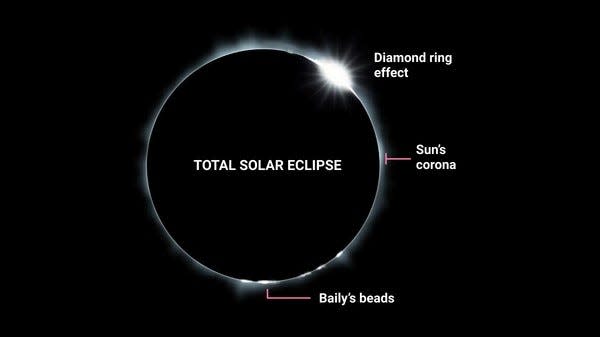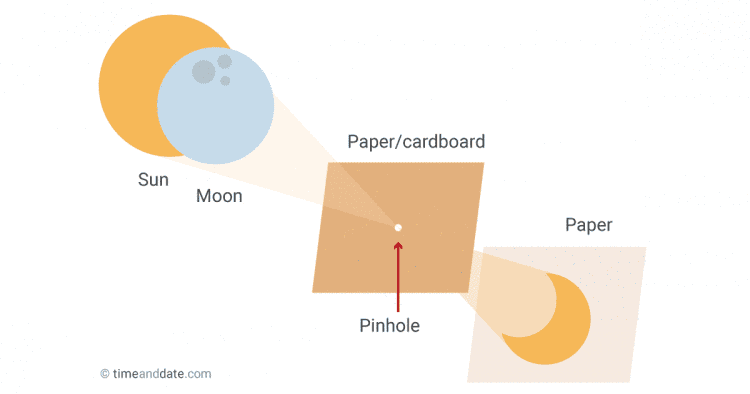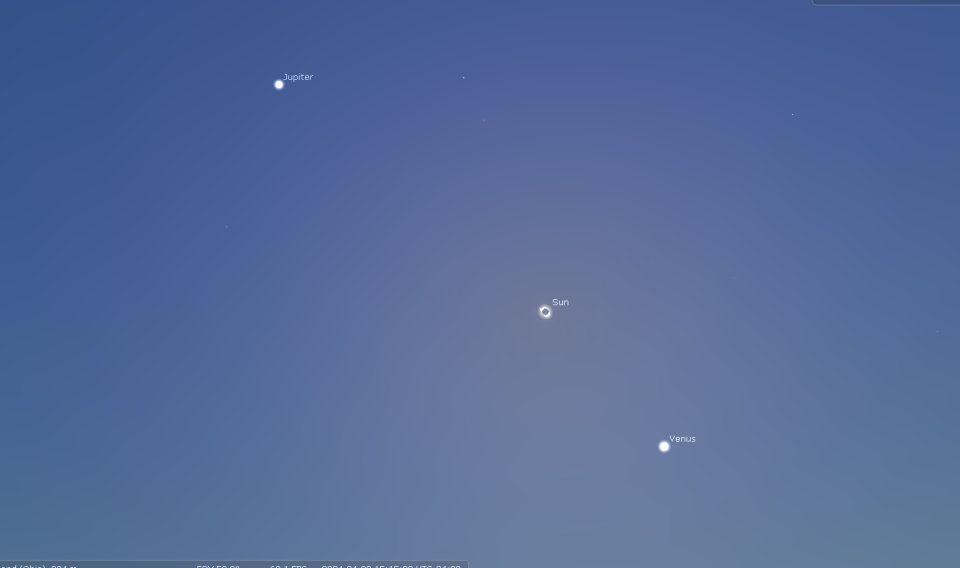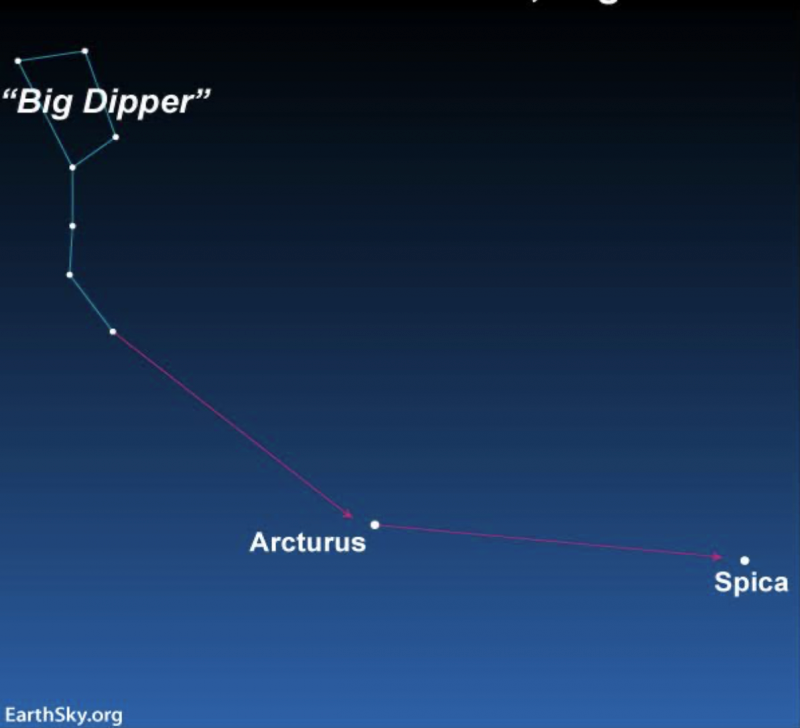Sky Shorts: One week from April 8 total solar eclipse

As you are reading this, we’re only days away from the big event! It’s time, at last, for the total solar eclipse on April 8!
You should be wrapping up your plan for where you will enjoy the eclipse and how you will safely view this special celestial event.
Visit mckinleymuseum.org for detailed maps and information. Contact our gift shop for the availability of safe certified solar glasses. When purchasing solar filter glasses, look for the international standard requirement code of ISO 12312-2, which sometimes is written as ISO 12312-2:2015. With the special film, the glasses are 1,000 times darker than ordinary sunglasses. The glasses will block out all but a tiny fraction of solar ultraviolet (UV) and infrared (IR) radiation. You can also purchase certified handheld filters.
Hoover Price Planetarium: Canton-based information on the April 8 eclipse
A total solar eclipse is one of the most awe-inspiring of natural events. So many phenomenal things must come together for this event to take place. First is the cosmic coincidence that the Sun’s diameter is 400 times the size of the Moon, but the Sun is 400 times farther away from Earth. This makes the apparent size of the Sun and Moon the same in the sky. Therefore, the Moon can completely cover the Sun. Nowhere else in our solar system does this occur! The Sun, Moon and Earth must be in a perfect lineup, and we must be in the dark umbra shadow or the path of totality. Of course, Mother Nature must be kind to us!
Remember, the city of Canton is just outside the path of totality. Canton timeline is that partial eclipse begins at 1:59 p.m. Maximum eclipse is at 3:15 p.m. Partial eclipse ends at 4:29 p.m. Visit timeanddate.com/eclipse for the timeline in your area. If you are in the path of totality, you will not need your solar glasses during totality.

There is so much to do during the 2½ hours for the event. Make pinhole projectors or projector boxes. Grab your kitchen colander and hold it so the Sun shines through the holes. Kids of all ages can draw pictures, with chalk or on paper, of the Sun’s appearance during the eclipse. We may even see sunspots, darker spots on the face of the Sun, due increased solar activity, as we approach the peak of the current solar activity cycle.
Eclipse close to home: A countdown to Ohio-centric details
As we get close to totality, observe your surroundings. Birds may start to roost as if nightfall is approaching. If the weather is warm, spring peepers may have heightened activity. The temperature will drop, shadows will become sharper and there will be a 360-degree twilight view around the horizon. Right before and after totality, we will see the last glint of the Sun passing through the valleys on the Moon’s limb. This is called the diamond ring effect. During totality we will see the Sun’s corona or atmosphere, which we never see due to the brightness of the Sun. The planets Venus and Jupiter will be visible too. Venus will appear around fifteen minutes before totality and will be down and to the right of the Sun. Jupiter will be up and to the left of the Sun.
If it is cloudy, it will still get dark. Also, tune into NASA TV at nasa.gov/nasatv/ for a live broadcast of the eclipse.
Enjoy every second of this grand event!

Night sky for April
Planets and the moon:
Jupiter will be visible throughout the month of April. The king of the planets sets three hours after sunset at the start of the month and an hour after sunset at months end. Jupiter lies 20 degrees above the western horizon 45 minutes after sunset on April 1. Views of Jupiter will become more difficult as we head through April as it drops lower each night. Jupiter passes less than one degree south of Uranus on April 20. The pair will be close to the horizon so binoculars will help for viewing. Another great viewing opportunity is on April 10 when we find Jupiter, at magnitude -2.0, 4 degrees below the slender crescent Moon. With binoculars you should be able to locate Uranus which will be 2 degrees above Jupiter at magnitude 5.9. We have a possible added bonus that evening, Comet Pons-Brooks, which will be 4 degrees west of Jupiter. Best to start looking 50 minutes after sunset.
Mercury fades and then disappears in the evening twilight during the first few days of the April. It returns to the morning sky and by April 30 you may find it 3 degrees high, 30 minutes before sunrise, at magnitude 1.1.
Mars and Saturn are the morning highlights. The pair are close to the east-southeastern horizon as April begins. Saturn is at magnitude 1.0 and Mars at 0.2 and the pair can be seen 40 minutes before sunrise. On April 5, Mars and Saturn are joined by the waning crescent Moon and lie 3.5 degrees apart. On April 6, the slender crescent Moon lies 2 degrees southeast of Saturn. On April 10, the pair will be less than one degree apart. They will be located about 5 degrees high, 45 minutes before sunrise. You will need a clear eastern view. Saturn will climb slightly higher than Mars. On April 30, Mars will be located 6 degrees high in the east while Saturn will be 11 degrees high. Saturn will rise two hours before sunrise and Mars will rise an hour and a half before sunrise.
Venus rises 30 minutes before the Sun early in the month, at magnitude -3.9, but you will need a good clear eastern view.
Neptune is difficult to see in the morning twilight.
Conditions are not ideal for the peak of the Lyrid Meteor Shower on April 22. The nearly Full Moon will fade out all but the bright Lyrids.
Night sky spotlight:
We continue to see more signs of spring in the night sky. On the next clear night, head outside and look eastward. You will see a bright orange-yellow star, which is Arcturus. If you notice, there are no other bright stars in that part of the sky. Arcturus is the 4th brightest star in our night sky. It is the brightest star in the constellation Bootes, the Herdsman and the brightest star north of the celestial equator. It is located 37 light years away and is a red giant star older than our Sun. The Greek meaning for Arcturus is “keeper or guardian of the bear.” It is very near the Big Dipper or the Big Bear constellation. Actually, you can star hop from the Big Dipper to Arcturus. Find the handle of the Big Dipper, now arc to Arcturus. It is interesting to follow the position of Arcturus from spring through summer.
For further night sky details, maps and audio, visit my website www.starrytrails.com.

Visit the Hoover Price Planetarium
Visit www.mckinleymuseum.org, for show dates and times! Planetarium shows are free with Museum admission. The planetarium is located inside the McKinley Presidential Library & Museum, 800 McKinley Monument Drive NW in Canton. For more information, please call the museum at 330-455-7043.

This article originally appeared on The Alliance Review: We're one week away from the grandest of celestial events

